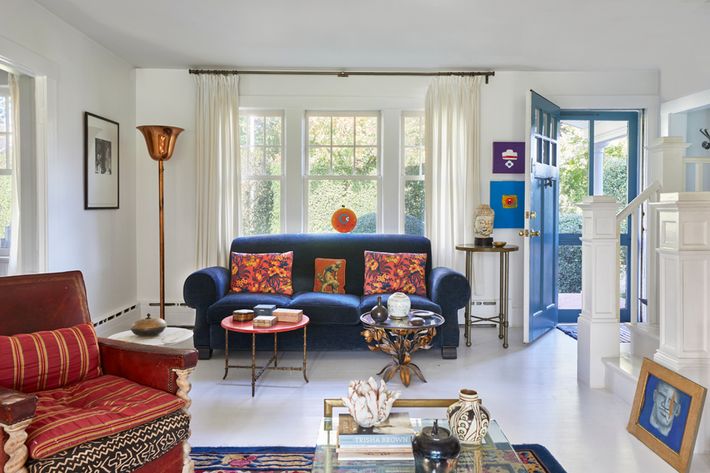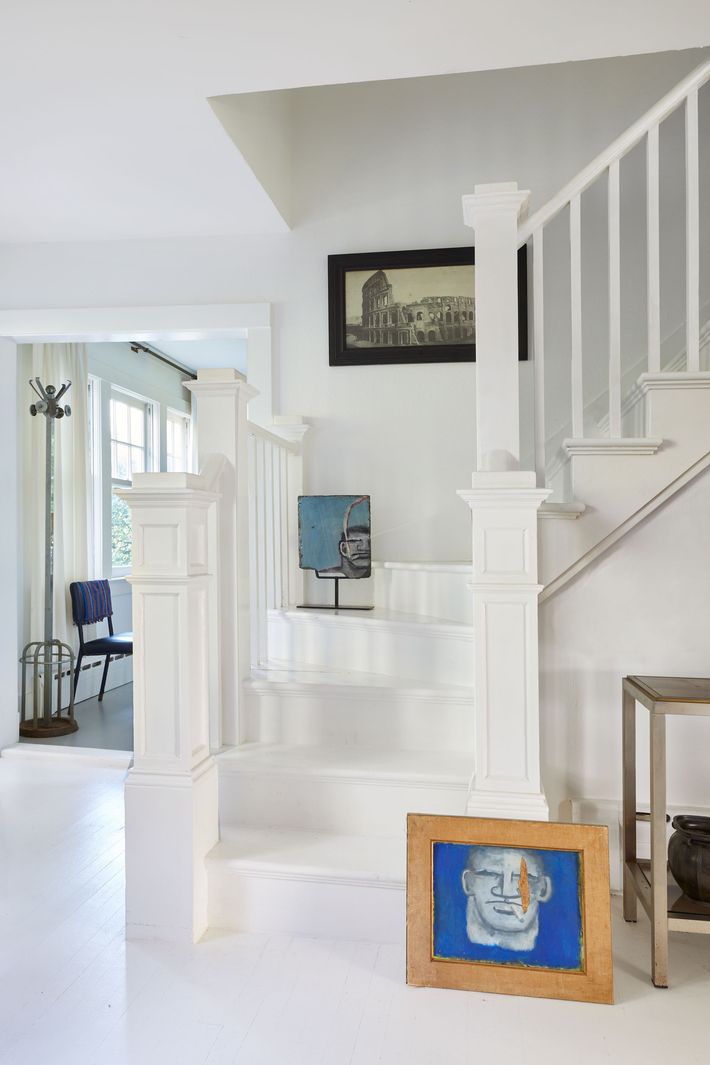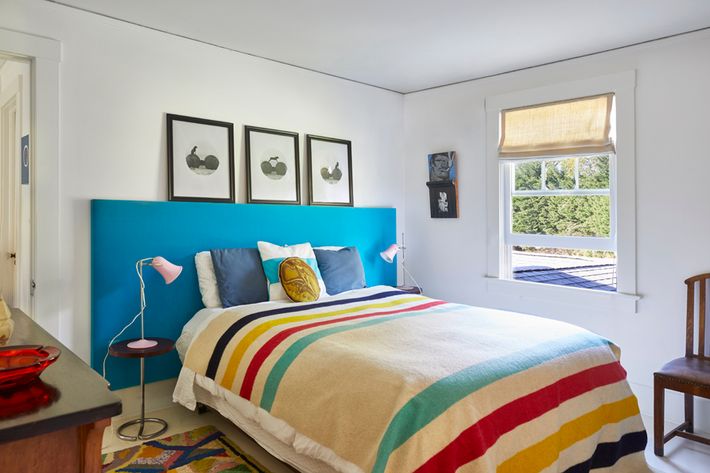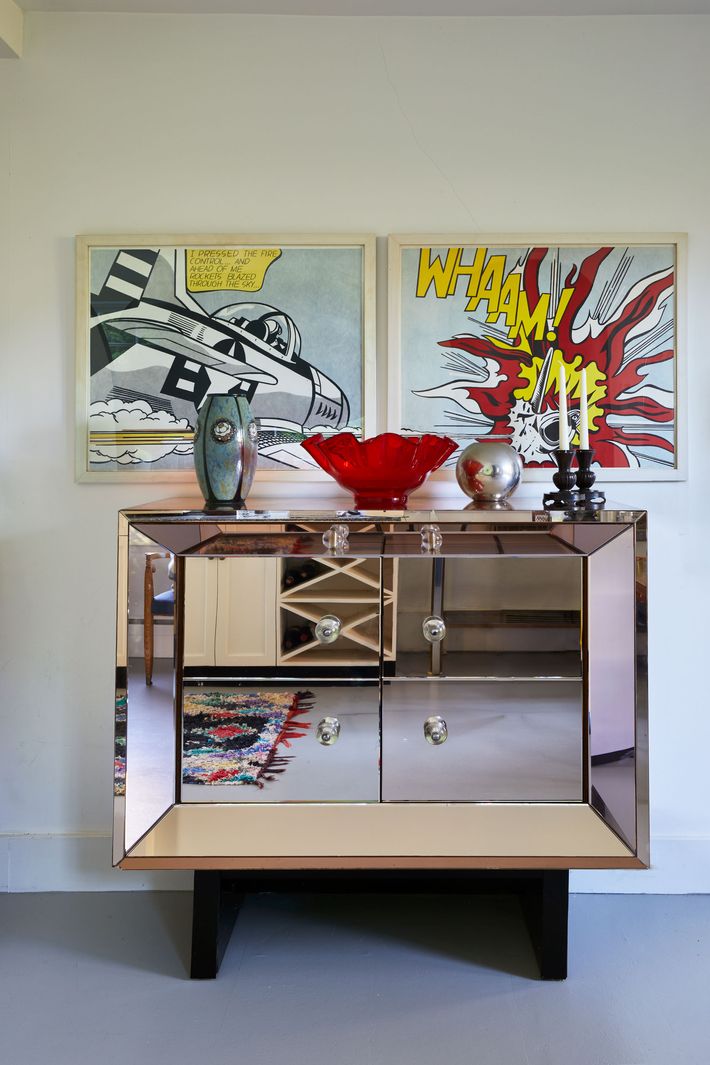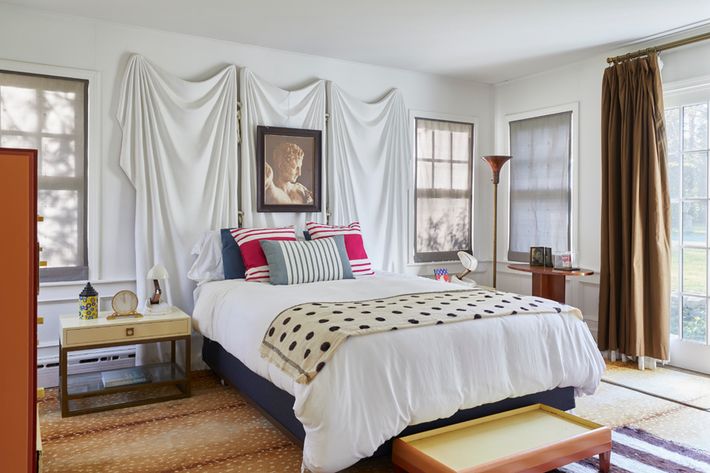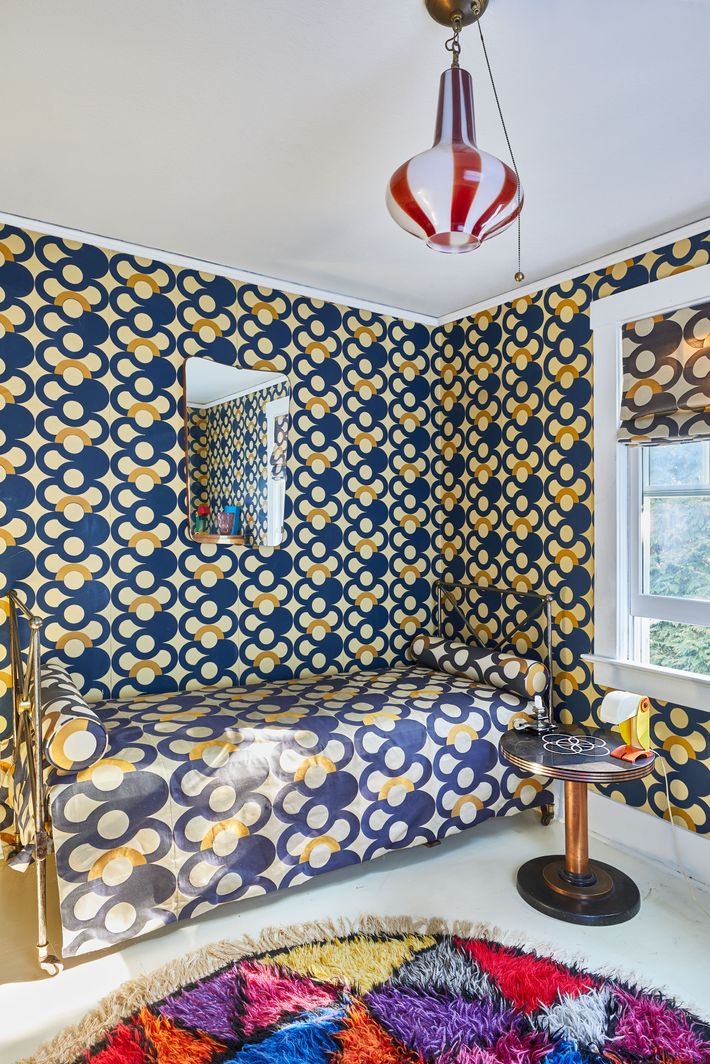Tour a Hidden Bridgehampton Dutch Colonial Filled With Art

The Living Room: The pair of 1930s wing chairs is attributed to Jean-Charles Moreux. Above the fireplace is a painting by Nicholas Howey. The blue carpet is Chinese Deco.
Photo: Tria Giovan
I always dreamed of having a country house with a separate studio,” says Nicholas Howey, which is just what he got when he and his husband, Gerard Widdershoven, bought this Bridgehampton property in 2008. The privet was hiding the Dutch Colonial from both the street and the fact it was sitting on one full acre of land — enough room for a studio in what was once a three-car garage and an old barn Howey describes as “adding to the atmosphere.”
Howey, a native of Dubois, Pennsylvania, graduated from NYU with an M.A. in art in 1974 and later went to work for the artist Robert Rauschenberg. Widdershoven, who was born in the Netherlands, had founded the design gallery Maison Gerard on East 10th Street, also in 1974. Widdershoven’s expertise included the work of Art Deco and mid-century designers such as Jean-Michel Frank, Line Vautrin, Jacques Adnet, and Jules Leleu.
Howey and Widdershoven met in 1987. They lived in a townhouse across from St. Mark’s Church on East 10th Street for 20 years before they decided it was time to buy a country house. (Among other things, this place had the advantage of being near their close friends Vincent and Shelley Fremont.) They moved into an apartment in the city and spent most of their time in Bridgehampton. In 2010, Widdershoven retired from Maison Gerard. (He died in 2020.)
The main house was built by Whitey Pulver, the owner of the local gas company, in 1925. When he died, his daughter took it over and added a bedroom on the main floor, which Howey and Widdershoven used as the primary.
The couple didn’t do much more to it than paint when they moved in. The décor is simple and colorful — a lifetime of collecting. “Gerard was always finding things,” Howey says.
But they had that in common. Howey points to a diptych of Roy Lichtenstein posters in the kitchen. After Howey bought one and had Lichtenstein sign it, he found out it was part of a set. Coincidentally, Widdershoven already owned the other half.
“A stroke of destiny!” says Howey.
The Living Room: The blue sofa is by Jules Leleu from Maison Gerard.
Photo: Tria Giovan
The Stairs: The photographer of the Roman Coliseum is unknown. The painting at the bottom of the stairs is by Robert Laughton.
Photo: Tria Giovan
The Wegman Bedroom: The three photographs above the blue headboard were taken by William Wegman in 1979. The two pink side-table lamps are from the Ladies’ Village Improvement Society in East Hampton.
Photo: Tria Giovan
The Kitchen: A diptych of Roy Lichtenstein posters. Gerard Widdershoven owned one and then Nicholas Howey bought the other, not knowing they were a pair.
Photo: Tria Giovan
The Primary Bedroom: This room was part of an addition made to the 1925 house in the ’50s. The plaster wall hanging behind the bed is by Mark Bandowsky from Maison Gerard. The bedside tables are Bakelite. The photograph of a sculpture of the head of Apollo is unattributed.
Photo: Tria Giovan
The Leleu Bedroom: Widdershoven brought some ’60s Jules Leleu wallpaper to Prelle, which created a matching fabric. The circa-1960 glass light fixture is by Massimo Vignelli for Venini; the vintage shag rug is Scandinavian. The paintings in the mirror are by Howey.
Photo: Tria Giovan
See All
Source link

